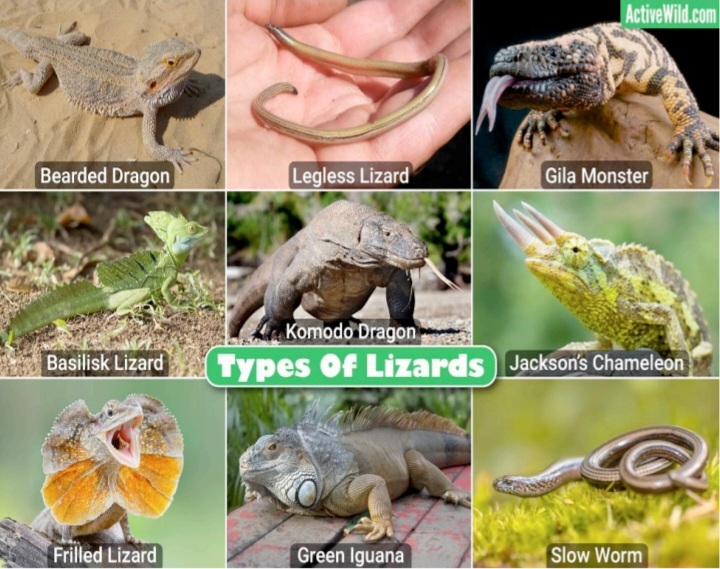A closer look at the World of Lizards

By Obiabin Onukwugha and Ngozi Eyeh
The Enigmatic World of Lizards: A Closer Look at These Fascinating Creatures
Lizards: nature’s intriguing thermostat regulators, masters of adaptation, and captivating inhabitants of our ecosystems.
These cold-blooded creatures, highly attuned to the environment, deftly manage their body temperature through strategic sunbathing and seeking out the cool shadows, influencing their habitat’s microclimate in the process.
This seemingly harmless creature has a peculiar affinity for human abodes, cohabiting in a way that’s almost symbiotic, though far from domestication. Known as “Kwasau” by the Hausas, these introverted beings keep mostly to themselves, displaying a remarkable sensitivity to scent.
In the grand tapestry of life, lizards stand as ancient witnesses, having graced our planet for an astonishing 320 million years. With over six thousand species inhabiting every continent except Antarctica, these creatures, referred to as “Ngwere” in Igbo, possess extraordinary abilities, shedding their skin and regenerating their tails. Their nimble feet allow them to scale walls and ceilings, showcasing their unique and acrobatic way of life.
However, climate change threatens their existence, particularly in temperate zones. The Elewe, as known to the Yorubas, face the peril of disrupted reproduction due to altered seasonal conditions, impacting vital natural activities like foraging and mating. Additionally, warmer spells in winter and changes in vegetation, fire patterns, and invasive species pose further challenges to their survival.
Yet, lizards play vital roles in our ecosystem. Serving as a crucial food source for birds, snakes, and mammals, they aid in seed dispersion and plant reproduction, enriching biodiversity. Moreover, their pest-controlling abilities, devouring insects like mosquitoes and agricultural crop pests, lessen the need for harmful chemical pesticides, thus promoting environmental balance.
Among the Edo, Ibibio/Annang, and Ijaw, lizards hold cultural significance with unique names such as EGỤỤ, Nto, and okpokpoi respectively. Their life cycle, from egg-laying to adulthood, unravels as a fascinating tale of transformation and adaptation.
Delving into the culinary and medicinal realm, Asian nations like China, Thailand, Indonesia, and the Philippines cherish lizards for their nutritional richness and healing potential. These nations have curated their recipes to cook and consume lizard meat, valuing it for its purported health benefits, such as enhanced energy, improved stamina, and asthma prevention.
However, caution is advised, as consuming undercooked lizard meat can pose health risks, carrying potentially harmful bacteria like Salmonella, E. coli, Campylobacter, and Staphylococcus aureus, leading to foodborne illnesses.
The economic value of lizards cannot be overlooked, especially for their skin. Lizard skin, known as “Okpokpoi,” holds a unique appeal, offering diversity and flexibility for crafting leather products. Its thin, calcium-lacking hide is easy to work with, bleach, and dye, making it a preferred choice for various leather applications.
In summary, lizards, often viewed as modest creatures, bring a wealth of wonder, ecological significance, and potential benefits to our lives. Their ability to adapt, their role in the environment, and their cultural and economic importance make them an intriguing subject of study and appreciation.
